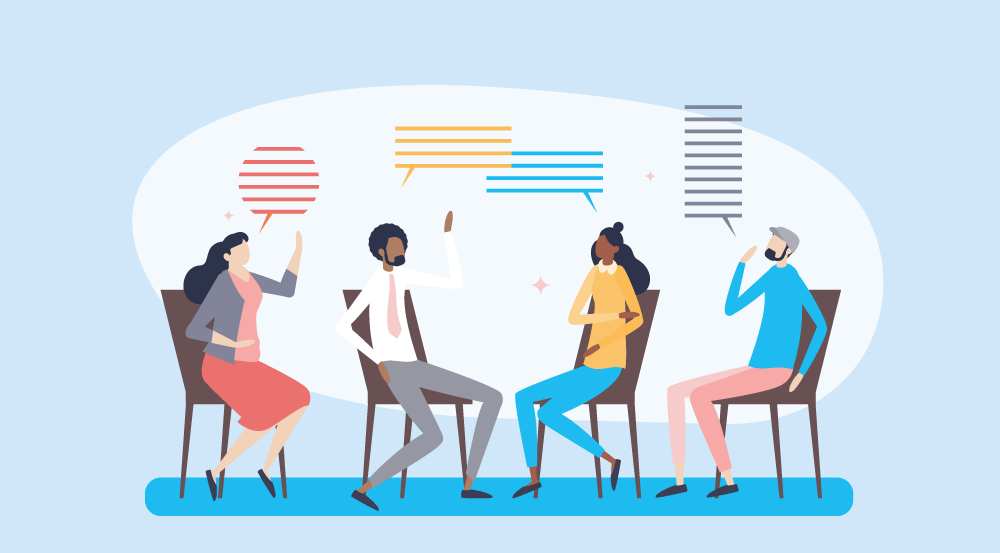
Facilitating group discussions and feedback sessions effectively requires a combination of communication skills, leadership, and facilitation techniques. Whether you are leading a team meeting, brainstorming session, or gathering feedback from a group, the following guidelines can help you create a productive and inclusive environment:
Preparing for the Session
-
Set Clear Objectives: Define the purpose and goals of the discussion or feedback session. Ensure that participants understand what is expected to be achieved.
-
Create an Agenda: Develop an agenda outlining the topics to be covered, the allotted time for each, and the desired outcomes. Share the agenda with participants in advance.
-
Select Appropriate Participants: Invite individuals who have relevant insights and perspectives on the topics to be discussed. Consider diversity in the group for varied viewpoints.
-
Choose a Suitable Location: Select a comfortable and distraction-free meeting space, whether in-person or virtual. Ensure that technology and materials are prepared and tested in advance for virtual sessions.
-
Gather Necessary Materials: Prepare any materials, documents, or visuals that will be needed during the session.
Facilitating the Discussion or Feedback Session
-
Set Ground Rules: At the beginning of the session, establish ground rules for communication, such as respecting speaking turns, active listening, and maintaining a respectful tone.
-
Start with an Icebreaker: Use a brief icebreaker activity to help participants feel comfortable and build rapport, especially in group discussions.
-
Encourage Active Listening: Remind participants to actively listen to others, ask clarifying questions, and avoid interrupting.
-
Use Open-Ended Questions: Pose open-ended questions to initiate discussions and encourage participants to share their thoughts and ideas.
-
Manage Time Effectively: Keep track of time to ensure that discussions stay on track. Allocate time for each agenda item and stick to the schedule.
-
Summarize Key Points: Periodically summarize key points or decisions made during the discussion to ensure clarity and alignment.
-
Facilitate Equal Participation: Ensure that all participants have the opportunity to speak. If some individuals dominate the conversation, invite quieter participants to share their thoughts.
-
Handle Conflicts: If conflicts arise, address them calmly and constructively. Encourage participants to express their viewpoints while maintaining respect for others.
Gathering Feedback
-
Use Structured Feedback Methods: When gathering feedback, use structured methods such as surveys, questionnaires, or group discussions with specific prompts.
-
Ensure Anonymity (if needed): In situations where anonymity is important for honest feedback, use anonymous feedback mechanisms.
-
Prioritize Actionable Feedback: Focus on feedback that can lead to actionable improvements. Avoid dwelling on issues that cannot be addressed or changed.
-
Acknowledge and Thank Participants: Express gratitude to participants for their input and assure them that their feedback is valuable.
Wrapping Up the Session
-
Summarize Key Takeaways: Conclude the session by summarizing the main points, decisions, and action items discussed.
-
Assign Action Items: Clearly assign responsibilities for follow-up actions, including deadlines and accountability.
-
Collect Evaluation: Ask participants for feedback on the session itself to continuously improve your facilitation skills.
-
Provide Closure: Ensure that participants leave the session with a sense of closure and understanding of what comes next.
Post-Session Follow-Up
-
Document the Outcomes: Maintain thorough records of discussions, decisions, and feedback collected during the session.
-
Share Meeting Minutes: Distribute meeting minutes or a summary of the session to participants and relevant stakeholders.
-
Implement Action Items: Ensure that action items are executed as planned and monitor progress.
Facilitating group discussions and feedback sessions effectively requires a balance of structure and flexibility, active listening, and the ability to guide the conversation towards productive outcomes. With practice and continuous improvement, you can become a skilled facilitator who fosters open communication and collaboration within groups.